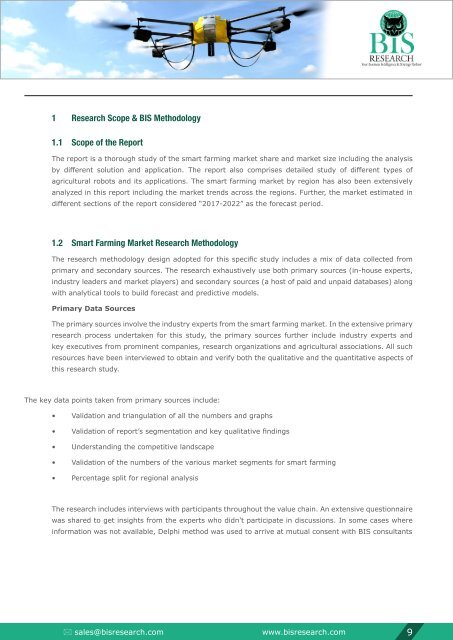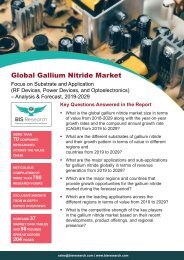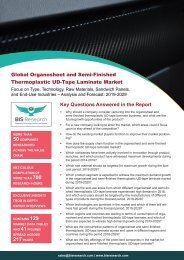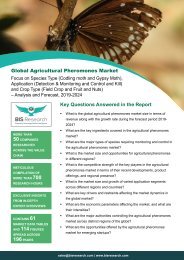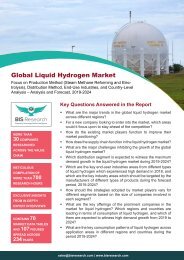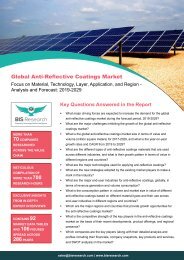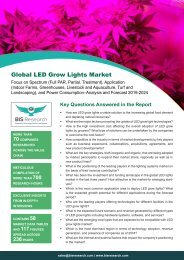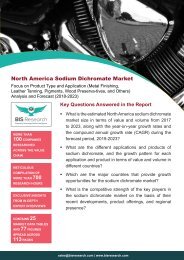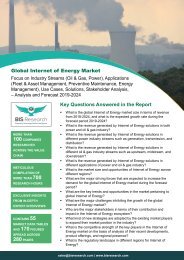Global Smart Farming Market Share
Precision farming, a widely adopted smart farming application, is utilized by farmers across the world to increase crop yield, reduce wastage, lessen environmental costs, ensure food security, and alleviate economic security risks. It improves the traditional farming methods by combining sensors, GPS, mapping tools, robots, and real time data analytics software to customize agricultural practices such as sowing, irrigation, harvesting, and fertilizer application as per accurate requirements and reduce expenditure on them.
Precision farming, a widely adopted smart farming application, is utilized by farmers across the world to increase crop yield, reduce wastage, lessen environmental costs, ensure food security, and alleviate economic security risks. It improves the traditional farming methods by combining sensors, GPS, mapping tools, robots, and real time data analytics software to customize agricultural practices such as sowing, irrigation, harvesting, and fertilizer application as per accurate requirements and reduce expenditure on them.
Create successful ePaper yourself
Turn your PDF publications into a flip-book with our unique Google optimized e-Paper software.
1 Research Scope & BIS Methodology<br />
1.1 Scope of the Report<br />
The report is a thorough study of the smart farming market share and market size including the analysis<br />
by different solution and application. The report also comprises detailed study of different types of<br />
agricultural robots and its applications. The smart farming market by region has also been extensively<br />
analyzed in this report including the market trends across the regions. Further, the market estimated in<br />
different sections of the report considered “2017-2022” as the forecast period.<br />
1.2 <strong>Smart</strong> <strong>Farming</strong> <strong>Market</strong> Research Methodology<br />
The research methodology design adopted for this specific study includes a mix of data collected from<br />
primary and secondary sources. The research exhaustively use both primary sources (in-house experts,<br />
industry leaders and market players) and secondary sources (a host of paid and unpaid databases) along<br />
with analytical tools to build forecast and predictive models.<br />
Primary Data Sources<br />
The primary sources involve the industry experts from the smart farming market. In the extensive primary<br />
research process undertaken for this study, the primary sources further include industry experts and<br />
key executives from prominent companies, research organizations and agricultural associations. All such<br />
resources have been interviewed to obtain and verify both the qualitative and the quantitative aspects of<br />
this research study.<br />
The key data points taken from primary sources include:<br />
• Validation and triangulation of all the numbers and graphs<br />
• Validation of report’s segmentation and key qualitative findings<br />
• Understanding the competitive landscape<br />
• Validation of the numbers of the various market segments for smart farming<br />
• Percentage split for regional analysis<br />
The research includes interviews with participants throughout the value chain. An extensive questionnaire<br />
was shared to get insights from the experts who didn’t participate in discussions. In some cases where<br />
information was not available, Delphi method was used to arrive at mutual consent with BIS consultants<br />
sales@bisresearch.com www.bisresearch.com 9


